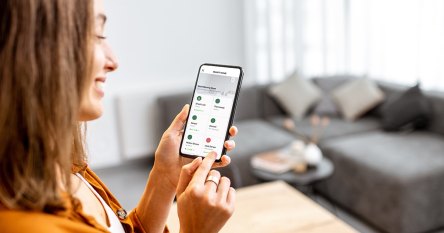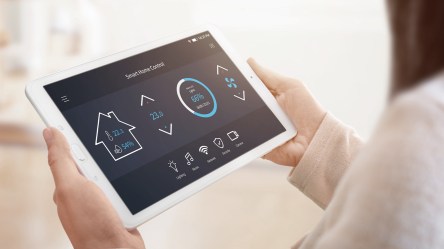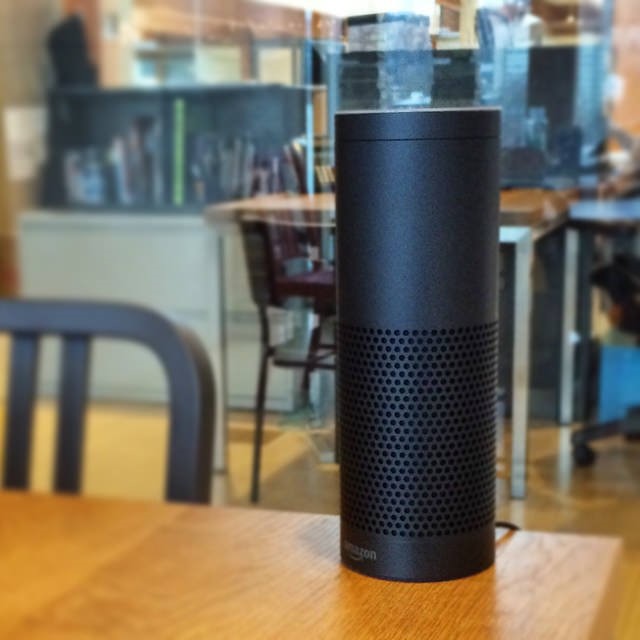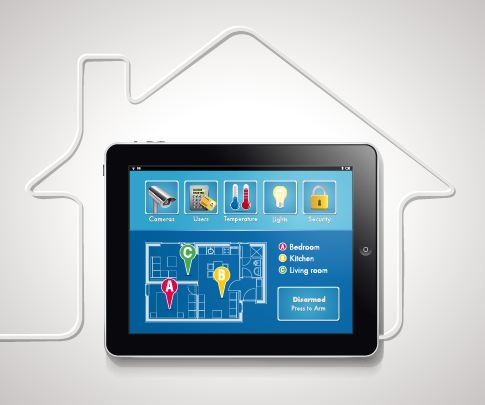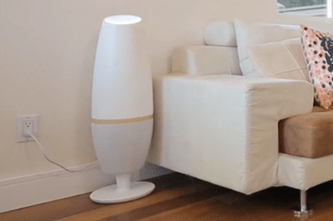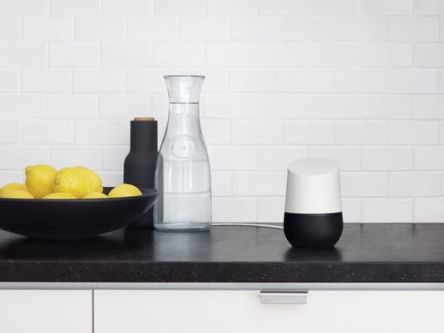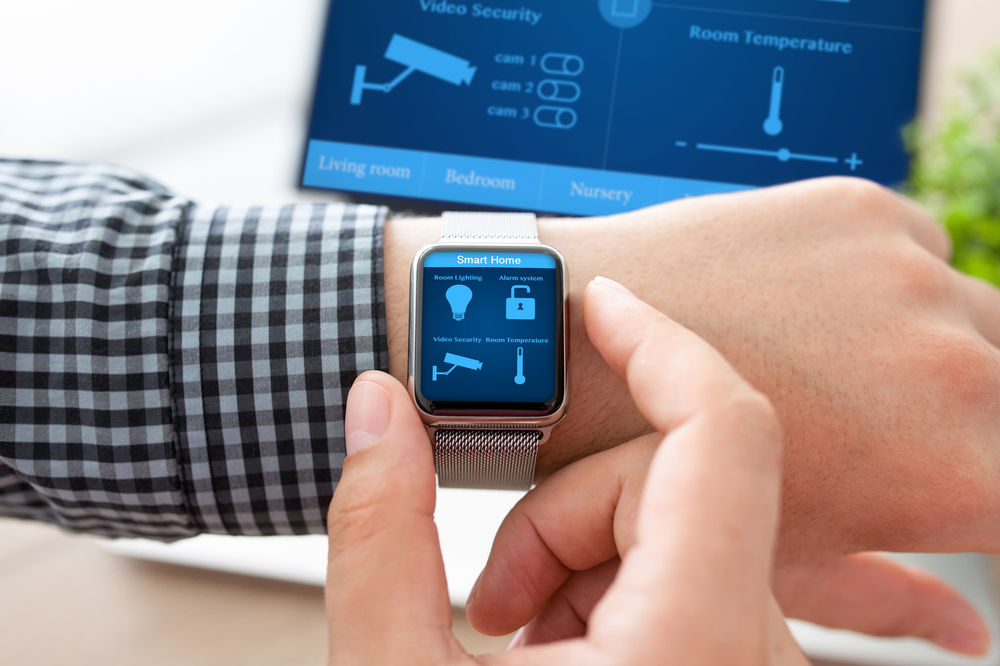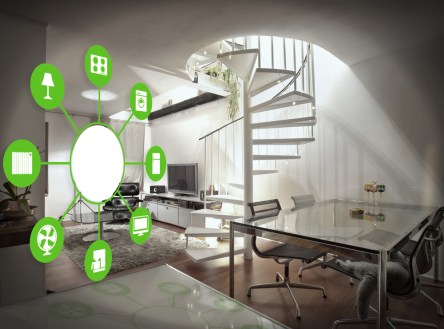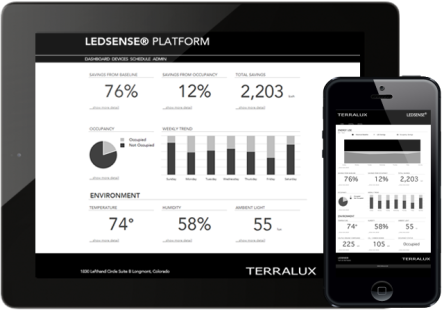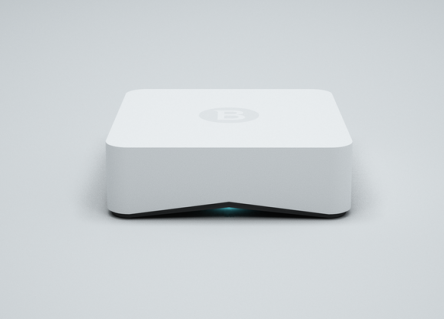Smart home technology is expanding rapidly. Renters want smart home amenities for security and convenience. Property managers are interested in its easy and productive operational management. Smart home technology is also used for risk mitigation and real-time insights to improve buildings’ sustainability as well as property managers’ understanding of their properties’ processes. RentCafe Home IQ is Yardi’s smart apartment solution for the multifamily industry. It allows for increased revenue opportunity and resident retention by offering advanced technology features and experiences. Home IQ deploys and manages a fleet of connected devices without installing custom or third-party software, making it easy to add convenience, streamline operations and manage risk. With new technology comes fresh considerations and questions. Here to help is Vice President Greg Smith. He’s been with Yardi more than 20 years and has been instrumental in the development of Home IQ. Below he shares a little insight into the smart home market, why we made Home IQ and how it compares to other products for multifamily. What is the current state of the smart home market? Smith: Smart home is hopping! And it’s not just for the techies out there. We’ve seen that renters are beginning to look for it and, in some asset classes, expect it. The good news is that smart home tech has as many (or more) benefits for the property owner and operator as it does the resident. Why is Yardi getting involved? Smith: Smart home tech is a natural expansion for Yardi. It’s easy to think of smart home as just a resident function, but the reality is that it can be a huge efficiency gain for the owners and operators. Yardi is always working on solutions to help our clients improve asset revenue and decrease risk, and smart...
Smart Home Tech
Good For Everyone
Smart home technology is our new reality. We’ve gone from remotely controlled lightbulbs to a whole universe of interconnected home goods that can be controlled from a phone. Smart home automation saves time and increases efficiency, improving resource management and security for both property management teams and residents. Renters in many markets are seeking out smart apartments, often willing to pay more for units with the right smart home tech. While smart home technology may seem like a simple appliance upgrade, it often offers data resources that have the potential to transform your business. Property managers use smart home tech to mitigate risk and get real-time insights that can ultimately streamline processes and improve sustainability at their communities. We asked over 16,000 renters about smart home technology and their preferences in a survey on RentCafe.com. Although the technology is still relatively new, a full 48% of respondents said that smart home technology was somewhat to very important to them. Here is what we found. What today’s renters are looking for Many renters are beginning to consider smart home technology a necessity more than a luxury. Some features that are more important to them than others — including smart thermostats, automated lighting features, alarm/security systems and smart locks. While many of these features are for renters’ convenience, it is also for their security and safety. In our smart home survey, we asked respondents which features they desired most, allowing them to choose more than one option. Of the 16,590 responses, 35% wanted security cameras, 22% wanted digital thermostats, 18% wanted keyless access locks, 15% wanted motion or leak sensors and 10% wanted wireless lighting control. Worth noting, according to a 2021 study by Assurant, 47% of prospective renters say that smart home technology increases their...
Real Estate Design
Pandemic Mitigation in Housing
Shelter in place practices have made an impact on every industry in America. Multitenant industrial and retailers grasp to make rent while grocers, tech, and delivery firms thrive. We naturally attach value to such changes. Real estate and its design, however, are neutral reflectors of social shifts. Like events before it, COVID-19 is the next big thing to change the face of housing. But first, let’s look back at other shifts that have changed the way that we live. We’ve seen this before – sort of Major social and economic events directly impact that way that we design and inhabit real estate. Following the wreckage of the Great Depression, President Franklin D. Roosevelt’s New Deal propelled the development of interstates and suburbs. Subdivisions sprang up, dispersing families into nuclear households. By the mid-1940s, middle class workers’ commutes prompted the addition of built-on garages. With the cheap suburban lots, greater car affordability, and adequate employment rates of the 1960s, many families opted for large houses with two-car garages. Fast forward to the economic prosperity of the 90s. Middle class and affluent Americans indulged in spacious homes with open floor plans. Multifamily construction boomed, answering demand from young adults who struck out on their own. Most formed their own households after graduation. In 2005, only 19% of college graduates lived with or moved back in with their parents, reports MarketWatch. The Great Recession ended lavish living for most Americans. Homeowners and investors struggled with mortgages, inundating the market with foreclosures. As the Great Recession dragged on, multitudes of seniors moved in with their adult kids. The number of recent graduates moving back into their parents’ homes jumped to 28% in 2016. The nuclear households of the 50s-90s began to disappear. Multigenerational housing reemerged and real estate changes followed soon after. Coming full circle to multigenerational housing with a twist Around 2012, multigenerational housing became the “new” trend in single family real estate. Though multigenerational households were the standard for thousands of years, modern multigen housing offered greater privacy. Finished basements with separate entries increased in popularity. Homes with two masters on the main floor thrived since they could support the homeowners as well as their aging parents. In price points that accommodated larger lots, young adults or in-laws lived in detached suites that shared mortgage and utilities costs. Young adults who would not or could not move in with family weathered the hard times in their apartments. Roommate floor plans were hot, especially when equipped with equally-sized private bedrooms and en suite bathrooms. Young adults postponed homeownership. Green building reasserts itself As the world shrugged off the burdens of the Great Recession, many eyes shifted to the next big thing in sustainable housing. Urban infill properties and mixed-use buildings brought residents closer to the businesses and services they used most. As a result, both classes reduced transportation pollution and costs. Between 2010-2019, tiny houses, micro apartments and co-living blossomed as way to reduce housing costs and environmental impact. Inside of their homes, residents implemented artificial technology to promote conservation and cut costs. Smart thermostats, lights, and appliances have become more commonplace. In addition to saving money and resources, residents crave greater control of our homes even when we were outside of it. Little did we know that we be spending so much time at home in 2020. COVID-19: the death of open floor plans? March 2020 marked sweeping shelter in place practices throughout the US. The sustainable measures of the past decade helped to decrease housing expenses, but other real estate changes are being reevaluated. Residents of mixed-use and infill properties are feeling the pain of stay at home policies. Public green spaces are closed and few units have more than a balcony for access to the outdoors. Psychologically, being surrounded by closed businesses isn’t reassuring. Smart home tech comes with benefits and disadvantages during the COVID-19 lockdown. The conveniences that...
Home Smart Home
Must-Have Amenities
Wondering how to make your property more desirable in a competitive market? Research shows that today’s renters (especially millennials) would rather have high tech amenities than a pool or gym. And, they’ll pay more for a smart apartment that offers technology services on demand. Why? Smart apartments make life easier by keeping you connected, automating daily tasks, reducing costs through more efficient use of utilities and freeing up time for the things you really enjoy. Living in a smart apartment is like having a remote to control almost everything in your home from a phone. According to the 2018 NMHC Multifamily Disruption Report, “As real time and personalized purchasing experiences become the norm, a lifestyle-focused apartment is as important as location and layout.” Are you offering today’s most-wanted amenities? And going a step further, are you future-proofing your community with technology? Smart stuff To sign more leases with quality residents who are likely to stay for a while, you should cater to their needs on a lifestyle level by going beyond basic online services. Here are some of the most popular tech amenities that you can offer (and brag about in your marketing) now. Keyless locks Smart locks provide convenience and security with keyless entry into apartments via touchpads and mobile apps. They also log when someone enters and leaves a unit. Residents can remotely authorize access to house cleaners, dog walkers, maintenance staff and visitors. Smart locks can also alert residents whenever their door is opened — and can be connected to a security system for additional protection and peace of mind. Thermostats One of the most wanted amenities is a smart thermostat, which enables residents to control their apartment climates remotely. Since heating and cooling accounts for nearly half of a property’s...
IoT in Multifamily
Takeaways from CFAA
During the Canadian Federation of Apartment Associations (CFAA) annual conference, attendees walked away with a powerful call to action: understand the role of the Internet of Things (IoT) in your business before implementing. Fulfilling this objective can lead to success for multifamily firms of all sizes. What is the Internet of Things? The IoT embodies a multitude of devices that are connected to the internet. These devices range from smartphones to home automation and even wearable fitness monitors. Such devices can be controlled remotely and interact with other devices. In many cases, devices connected to the internet also gather and store user data to contribute to machine learning. Masa Hoshino, product manager at Yardi, explained that three components drive change in the IoT on the consumer level: hardware, software and culture. Hardware, like a smart refrigerator, may use wireless connectivity to automatically set the time on the clock. Software, such as apps installed on that fridge, is designed to solve a problem and provide a better user interface such as peeking in when grocery shopping. Lastly, the convenience of internet connectivity has made it a necessity for consumers. Connectivity increases the perceived value and functionality of hardware and software—and a home. How Does the IoT Impact Real Estate? In real estate, consumer culture and corporate benefits demand the integration of the IoT in our properties. Smart homes offer convenience, entertainment, and the potential for lower utility bills. While a home with multiple smart features is desirable for modern renters, multiple apps to control those features is very undesirable. True efficiency entails a single, reliable app that connects residents to their smart homes and property management through a secure user portal. For property stakeholders, the IoT can also be used to promote greater efficiency and...
Alexa and AI
She's Always Listening
As the popularity of Artificial Intelligence is on the rise and corporate giants such as Google, Microsoft, and Apple are racing to develop the best commercial AI product, the focus has shifted from humans being more intelligent like machines, to developing machines to act more like humans. This past July, Amazon acquired a Santa Barbara startup called Graphiq, previously known as FindTheBest, for an estimated 50 million dollars in hopes of using the company’s data analysis and search engine technology to make their digital AI assistant, named Alexa, even smarter. Alexa was first implemented in 2014 with the introduction of Amazon’s Echo, but has come a long way since then by developing complexity that far surpasses its competitors such as Apple’s Siri or Google Assistant. The reason why Alexa has become such an advanced AI is due to the integrations that were built into the voice-controlled platform. For example, users can apply a skill to Alexa, which allows the AI to do various actions such as setting the oven temperature or turn on lights in your home with a simple command. There are currently about 250 or more products offered on Amazon.com that can be integrated with Alexa skills, but there are over 4,000 other products from other manufacturers that can also include the function. Smart Cars get Smarter In addition, Alexa’s API, or application program interface, allows it to integrate seamlessly into the automotive industry. Just recently, Amazon has already created partnerships with automotive manufacturers such as BMW, Hyundai, and Ford. While each car manufacturer will vary in how they will integrate Alexa into their product designs, the voice controlled command system that Alexa offers would remain the same across all manufacturers. For example, simple commands such as opening the car trunk, or...
Ecoluxury
From Trend to Industry Standard
Modern renters gravitate towards housing that allows them to protect natural resources without sacrificing convenience. Increasing demand has paved the way for sustainable features to shift from ecoluxury to affordable communities. Luxury is not a term for opulence. Rather, the phrase reflects the Latin luxus, which denotes something that is precious and of optimal caliber. The ecoluxury lifestyle and products signify the value of our environment and the high quality of the products used to protect it. Joyce Mihalik, Vice President, Integrative Design, Forest City Realty Trust, defines ecoluxury as “seamless elegance embedded with sustainable design that gives the tenant a luxurious experience.” Sustainable features must blend with convenience, functionality, and style. Ecoluxury appeals across demographic boundaries. “If you can afford it, you will want it,” Mihalik casually says. The trending products below reappear in ecoluxury communities throughout the United States. As demand rises and pricing becomes more competitive, these features will appear more frequently in market rate and affordable communities. Home Automation Devices GID Investment Advisers, and its property management company Windsor Communities, is a national leader in green multifamily properties. With 11 green certified buildings and nine additional properties in the certification process, the Boston-based company takes pride in its ecoluxury residences. Matthew Bernstein, Asset Manager, GID Investment Advisers, notes the growing popularity of smart home devices, “Home automation will continue to grow, offering new opportunities for residents to enjoy smart homes.” Home automation devices allow renters to remotely control thermostats, fixtures, appliances, and even outlets through the use of a mobile device. GID’s Los Angeles property, Hanover Olympic, offers 20 Eco-green units. Each unit is equipped with a Google Nest Thermostat. After one week of use, Nest learns the preferences of inhabitants. The device then automatically adjusts interior temperatures to account...
Safer Smart Homes
Internet Security
The Internet-of-Things promises convenience and efficiency, but without security protocols, any connected home could end up the victim of hackers and other cyber-crime. Is your refrigerator running? No, this isn’t some rehash of a preteen prank-call; thanks to Smart Homes, it’s now a legitimate concern. While “the internet of things” promises to liberate us from the toil of monitoring our residential lighting and free us to manage appliances from the comfort of our smart phones, this convenience is not without risk. As a recent article in Wired points out, all those residential Wi-Fi connections have enabled “a new breed of over-the-internet attacks,” and Smart Homes are easy pickings for all manner of cyber-criminals. Connected and Vulnerable The ability of hackers to remotely access internet connected devices has plagued public utilities and healthcare providers quite a bit in recent years. In 2011, Russian hackers accessed the pump system of a Springfield, Illinois water utility, stealing users’ names and destroying a water pump. Earlier this year, ransomware knocked out the internal computer at the Lansing Board of Water and Light after an employee opened an email attachment. And the attacks are only increasing in volume and severity, trigger many security experts to raise the alarm and call for more stringent security systems. As Malwarebytes security researcher Jérôme Segura recently mused when considering the dangers of ransomware, “One can imagine how detrimental it would be if someone was in the middle of a major operation and suddenly all of their health records became unavailable.” In fact, the concern about Smart Home vulnerability is not theoretical. In May of this year, Cybersecurity researchers at the University of Michigan unlocked the front door of a Smart Home using specially developed “lock-pick” malware. By exploiting “over-privilege” – a security loophole...
Orison
Home battery system
Institutions and regular citizens are transitioning from a fossil-fueled past to a cleaner energy future. The cost of installation for such systems has dropped considerably in recent years, making them more affordable for general use. Currently, one of the biggest wrinkles in this still young industry is storage. A study by EuPD Research shows that just 34 percent of photovoltaic installers in the U.S. offer storage solutions to customers. The company’s latest PV Installer Survey revealed that current pricing of batteries impedes demand, meaning margins are too low for installers and the “technological maturity” of the systems on the market is not currently convincing. But things are gradually changing—26 percent of survey participants say they are working on adding storage products sometime this year. However, across all sectors there is a growing trend for more storage globally—IHS forecasts as much as 900 MW of storage projects will come online in 2016, meaning a doubling of the current cumulative installed storage capacity globally. GTM found that in the U.S., the storage market more than tripled in 2015, growing 241 percent for the year, spurred by pro-storage policies in many solar states, as well as incremental price decreases for leading battery technologies like lithium-ion. The leader in the field is Tesla’s Powerwall; the product scored top marks for “unaided brand awareness” in the EuPD Research survey, as installers discovered they had very little marketing to do to consumers. Another very popular battery brand is Trojan (solar & storage installations), but we want to talk about the new Orison home battery, the product of a San Diego-based startup. Launched on Kickstarter this year, Orison is going up against the biggest names in energy storage, an emerging area of technology of great importance. Orison’s stylish new product has...
Google Home
Answering Your Questions
The latest Google I/O Developer Conference introduced Google Home, a compact Wi-Fi-connected speaker that’ll allow you to talk to your house and the internet. Virtual assistants powered by artificial intelligence are no longer a new thing, in fact, the niche has become the new battleground for consumer technology. Apple’s Siri, Microsoft’s Cortana and Amazon’s Echo Alexa voice agent are Google Home’s direct competitors. It seems Google wants to make up for the earlier misses on instant messaging and social media and came up with this. And since Google’s conversational assistant is similar to Cortana and Siri, it will be implemented in phones and wearables too. Google Home is a small, cylinder-shaped gadget with far-field microphones and speakers, that’s always listening for your questions and commands. The speaker bows out a bit and overall has a cute appearance. Its modular case is customizable, allowing to choose different base shells to match the environment. It also flaunts some LED lights that seem to dance a bit to show that it’s working. Behind it is executive Mario Quieroz, VP of product management and the man who launched Google’s Chromecast. The Google Home is his next act. The new member of the Google family is not portable, but that turns out good for the speaker-feature as Quieroz claims that it “really fills the room,” having “strong bass and clear highs”; this feature sounds reassuring because one of the main cases Google is foreseeing for it is listening to music. Furthermore, Home is designed with multiple rooms and speakers in mind from the very beginning, meaning that it supports multi room playback. Due to the fact that it uses the basic Cast standard, it uses the same technique as Google Cast Audio—you can talk to any speaker and tell...
Supersized Smart Home
Advanced tech from Lennar Urban, Bosch
When smart home technology integrates with our lives outside of the home, there is potential for greater innovation. Lennar Urban recently obtained the green light to develop 750 acres of a former military shipyard in San Francisco. Once completed, the mixed-use Shipyard Communities project will be like a single, expansive smart home for residents and tenants– a smart community. Lennar Urban teamed up with Bosch Software Innovations to transform the smart community concept into a reality. Bosch will gather hyper-local data on transportation, surveillance, and other public services and infrastructure. That data will then be organized and shared with Lennar residents through apps. Within parking garages, for example, a Bosch sensor system will alert users of vacant spaces. Data-based services will be available for private use as well. Parents can ensure that their kids safely make it home from school via a neighborhood GPS-tracking feature that communicates with a mobile app and the home’s security system. Residents will also be able to control home security, appliances, and more through a smart network of apps and devices. This project is just the tip of the iceberg for Bosch, which hopes to take its Smart Community apps to cities nationwide. Mike Mansuetti, president of Robert Bosch LLC, says, “The application for The Shipyards community was a collaboration from the beginning between Lennar Urban and Bosch, showcasing how Bosch works with communities to bring smart technologies to life in unique and exciting ways.” The collaboration between Bosch and Lennar could provide a more stable and valuable framework for smart home technology companies. Fortune has covered the drama unraveling at Nest and Revolv, Google’s cloud-based smart home devices. Now that smart home technology is finally beginning to catch on, it seems too little too late. Revolv will be retired this May. Nest sales have missed revenue outlooks for the year. Smart home technology has had a difficult time building momentum with mainstream consumers. Accenture LLP reports security as the main hurdle that tech companies must overcome: 47% of survey respondents cite security and privacy as obstacles to adopting smart home technology. Of those who purchased smart home devices, 18% stopped using them due to a lack of security guarantees. Users were also frustrated by regularly updating numerous apps that were not integrated. The Lennar-Bosch combo offers a model worth considering. Smart home technology is sold to builders rather than individual households. One company, rather than several companies, maintains hardware and software. That could be a major incentive. Of those surveyed, 82% of respondents want to control all their smart devices through one integrated security package. The Lennar Urban community is slated for completion in winter...
Smart Home
Internet of Things Innovation
Imagine crossing the threshold after a long day at work to a perfectly lit, temperature-controlled living space. As you walk down the hallway, lights flicker for your approach while a disembodied voice welcomes you with a rundown of messages and alerts as your crockpot bubbles aromatically in the kitchen. It sounds like the stuff of science fiction, but if Samsung, Google and Apple have their way, eventually every home will be a “smart home.” Highlighting their technology’s ability to keep residents apprised of every activity in their home, Samsung’s Smart Things touts a setup that includes an App (available for iOS and Android), a Hub, and collection of up to 200 customizable devices including thermostats, light bulbs, outlets and sensors. The Smart Things app can push notifications to users, and its devices can turn off and on at particular times or based on temperature and vacation settings. Home monitoring through the app provides instant alerts for intrusions, smoke, leaks and other unusual activity. Adding a camera even allows for video footage of flagged events. The Hub connects via Ethernet, and uses ZigBee and Z-Wave radios for IP compatibility and works with products ranging from Sonos to CREE to Honeywell. In line with the company’s seeming commitment to simplified, intuitive technology, Google’s Nest products work together to create a “connected” home environment for easy management of a broad range of devices from electric vehicle charger to automated pet feeder. Nest touts itself as a solution for those seeking “the thoughtful home: A home that takes care of the people inside it and the world around it.” Centered on three main products – Nest Cam, Nest Protect, and Nest Learning Thermostat – the Nest app allows users to access live streaming video and control indoor temperatures...
Ledsense
Smarter source of light
The Smart Home is a very entertained interest in the technology industry; nowadays it comes equipped with devices capable to increase comfort, protect occupants, and save on utility bills. Houses already have Nest – the smart thermostat, Goji – the smart lock, Tado Cooling – the air conditioning/ thermostat smart device, and Luna – the smart mattress cover. Using the smartphone as the device to turn on lights, lock doors, check humidity levels, and monitor energy use inside the home, requires a large data set, and systems must be programmed individually and connected to the controlling transmitter. Terralux, a LED lighting company, recently launched a new product named Ledsense, which is a cloud based lighting system with brain power. Looking at the evolution of LEDs, not too long ago, they were not only ineffective, but also very expensive; those were the shining times of the Compact Fluorescent Lamps (CFLs). Since then things evolved and nowadays LEDs show increased improvement in efficacy, today demonstrating some of the highest light outputs – measured in lumens per watt – and at the same time, the economics of LEDs are compatible with other light sources. Slowly, but surely, LEDs are replacing CFLs, with more and more organizations looking to save money and deliver a lighting alternative that is friendly with the environment. The Ledsense platform integrates the LED light unit with sensor communication and control technology; it acts like an Internet of Things on LED lights. These units are quite amazing: they include sensors that can determine building temperature, sense motion from a person in the vicinity, and even sense odors and potentially toxic chemicals in the air. All this data is collected and then communicated back to the building owner, through the cloud. “A light is no...
Bitdefender BOX
Smart home security
As soon as the first smart home device launched, I’ve started wondering: who was going to put a leash on what we now call The Internet of Things. Surely all with an interest in this age of ultra-connectivity and smart devices have had at least one vision where all these things around us turned against us and took over. Sounds scary, no? Just recently, Stephen Hawking’s warning regarding artificial intelligence and how it could end humankind made international news. The first test space for the internet of things and artificial intelligence is the “smart home.” We are now witnessing the evolution from building and home automation to smart homes: this evolution is driven by the progressing maturity of the Internet of Things and the use of artificial intelligence. Current significant technological challenges revolve around the immaturity of home intelligence and the means and ways to “educate” it. Romanian antivirus firm Bitdefender strives to do just that, although not directly. Bitdefender BOX is a physical network device described as “the security solution for the Internet of Things,” but not only that. The BOX is claimed to be a defense against all security layers, usually sold only to businesses, such as botnets, phishing, data theft, or everyday malware. The hardware piece took over one year of assiduous work to be complete was designed to secure not only PCs, but also tablets, smartphones, smart TVs, smart fridges, lighting systems, and alarm systems connected to Wi-Fi. Bitdefender BOX is a fascinating hybrid between a router, network firewall, and intrusion prevention system. Its specifications are far from impressive – single-core 400 MHz MIPS microprocessor, 16 MB Flash memory, 64-MB DDR2 RAM, two 10/100 Ethernet ports and a wireless chipset that supports the 802.11b/g/n Wi-Fi needs, capable of speeds of...


